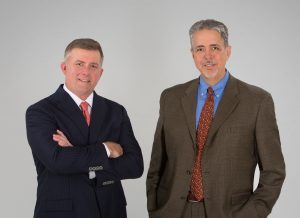Since the number of funds we can cover in-depth is smaller than the number of funds worthy of in-depth coverage, we’ve decided to offer one or two managers each month the opportunity to make a 200 word pitch to you. That’s about the number of words a slightly-manic elevator companion could share in a minute and a half. In each case, I’ve promised to offer a quick capsule of the fund and a link back to the fund’s site. Other than that, they’ve got 200 words and precisely as much of your time and attention as you’re willing to share. These aren’t endorsements; they’re opportunities to learn more about interesting funds.
KCM Macro Trends Fund (KCMTX/KCMIX) launched in 2008. It’s managed by two guys trained as attorneys: Marty Kerns, who has been managing the fund since inception, and Parker Binion, who joined in early 2016. 
The fund’s strategy is thoughtful and appealing. They want to give you exposure to stocks when markets are rising, and exposure to other assets when markets are falling. That implies two decisions:
- Macro: is this a Risk-On or Risk-Off environment?
- Micro: what are the best investments giving the environment?
In a Risk-On environment, the fund relies on quantitative screens to construct an equity portfolio. In a Risk-Off environment, the fund can reduce net equity exposure to zero so that it’s effectively market neutral. In such markets “we will hedge using three approaches: (1) buying ETFs that act inverse to the stock market to create a market neutral or net short posture, (2) option trades that accomplish the same thing, and (3) investing in non-correlated asset classes such as bonds, precious metals or currencies through the use of ETFs.”
As we ran our statistical screens, the pattern was pretty striking:
KCM Macro Trends has returns in the top 1% of its Morningstar Multi alternative peer group over the past five years.
As of January 31, 2018, the fund has the highest five-year returns of any multi alternative fund in Morningstar’s database; they’ve earned 11.3% annually while the next highest fund (AlphaCore Absolute, GDAMX) booked 7.4%.
The fund’s returns are in the top two for the one- and three-year periods.
KCM Macro Trends has the highest returns of any alternative global macro fund in our database, which is built on Lipper data and categories; they’ve earned 11.8% annually while the next-highest fund (RiverNorth Core RNCOX) booked 8.8%.
KCM Macro Trends has the highest Sharpe ratio, the most widely used measure of the risk-return balance, of any alternative global macro fund: 1.15, with RNCOX an honorable second at 1.06.
The fund’s returns are in the top 5 for the 1- and 3-year periods as well.
While the fund was around only for the last eight months of the 2007-09 crisis (August 2008 – March 2009), it dramatically outperformed its peers and the broad market during that last spasm: KCMTX fell 14.5%, the average multi alternative fund fell 22% while the S&P 500 declined 41%. (In eight months! Yikes.)
All of which is reflected in the fund’s consistent five-star rating (over the past 3 and 5 year periods, and overall) by Morningstar.
We asked Mr. Binion to talk through the factors that might explain the fund’s distinctive risk-return profile. Here is his 292 word précis:
Marty Kerns and I have developed five core beliefs about investing. Here’s what we stand for:
- ORIGINAL RESEARCH
Consensus positions get benchmark results. We seek to beat our benchmark, thus we must be contrarian. We must have “active share.” So we rigorously test new ideas, trying always to identify what “works.” When we outperform, research is a big part of our edge.
- QUANTITATIVE INVESTING
We convert our research into quantitative models by developing buy/sell rules and ranking systems. These models produce buy/sell signals that we follow in a disciplined manner. We do this to remove as much emotion and behavioral bias as possible from the investment process. This is a big edge over most discretionary managers.
- LONG EQUITY BIAS
We favor equities over other asset classes under most circumstances due to their risk premium. We are biased long because good shorting opportunities are harder to find, and because shorts have limited upside potential with unlimited downside risk. However, we do use short positions in our fund as hedges seeking to reduce volatility and for profit.
- RISK CONTROL
For example, on a stock selection level, we cap sector exposure and individual name exposure. On a portfolio construction level, we make sure the models we use are relatively uncorrelated (i.e. diversified), and weighted in parity to the risk they pose.
- FLEXIBILITY
Finally, we believe in being flexible to adapt to changing market conditions. We have rules in place that guide us when markets get too risky, or extremely favorable, and will adjust our portfolios accordingly. Over the long term, we believe our flexibility is a big edge over funds trapped in an equity style box come rain or shine.
We run our fund with these core principles in mind.
KCMTX is a no-load fund (and no transaction fee on major retail platforms) with a $5,000 investment minimum and expenses of 1.65%. The Institutional class, KCMIX, has a $250,000 minimum and expenses of 1.40%. The fund’s website isn’t incredibly rich, but does provide a clean snapshot of the fund and a nice (and soon to be updated) investor presentation.









